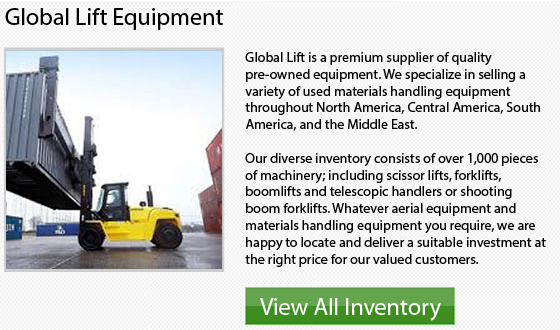
Even though sales volumes have typically been small, about 1% to 5% of the international forklift market; side-loaders have become the dominant choice of machine within the material handling business for dealing with unconventional loads in a simple manner.
Commonly, side-loaders are used in the timber, aluminum, steel, glass, aviation and construction industries. In addition, they are utilized in industries that are making unconventional objects like for example windmill arms and moldings. Practically any industry which makes oversized long or awkward items uses the side-loaders.
During the start of the 1950's, Henry Le Grande Lull from the Lull Manufacturing Company initially made the sideloader lift truck. These early models were requested from the United States Air Force. The first concept was patented for commercial application but it was not developed until Lull Manufacturing was taken over by the Baker Raulang Company during the year 1959. It was Baker Raulang who made the design. Later, the name was changed to Baker Traveloader. In the latter part of the 1950s, the side-loaders were introduced to Europe. The beginning models were made by Italian manufacturer Fiora and the afterwards B-P Battioni e Pagani who pioneered the equipment's use within timber yards.
Side-loaders differ a little from forward traveling, counterbalance lift trucks in that they have their forks located on the side of the machinery. The operator drives the equipment sitting inside a cabin like a traditional lift truck. The lifting, loading, and unloading functions are performed by the mast located at the right-hand side of the driver. The cargo is usually transported lying on a metal or wooden deck. This helps to lessen distortion, stress and damage to the cargo. Recent innovations to the side-loader design have incorporated a large variety of lifting accessories being developed.
The use of side-loaders as opposed to the reach-stackers or standard lift trucks: safer operating conditions, improved visibility, and the ability to use available space more efficiently along with faster traveling speeds.
Only once you assess your work environment and types of applications you will be putting your equipment through, will you be able to accurately determine the best kind of equipment to complete your tasks. There are a few good rental choices available as well in order to determine the best kind of machine to accomplish your requirements. Doing some research on the Internet or talking to a respectable dealer is one more good way to get some information as well when trying to know the best alternative.